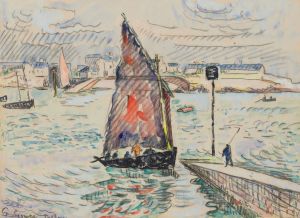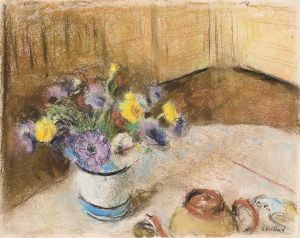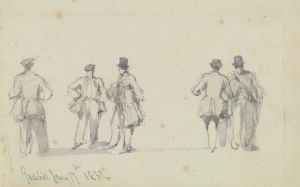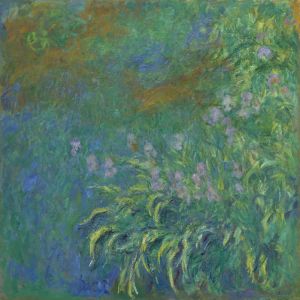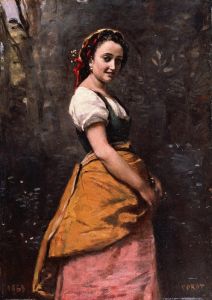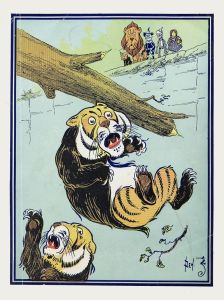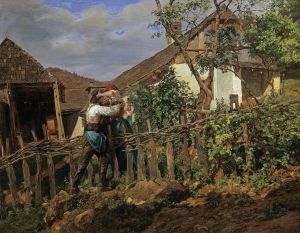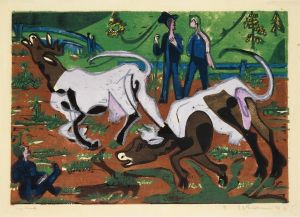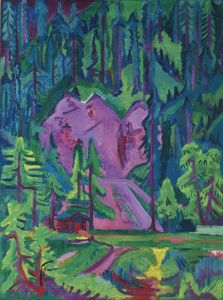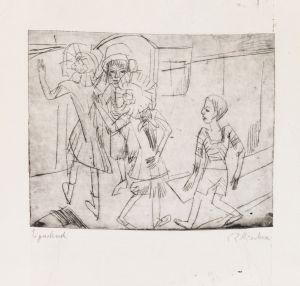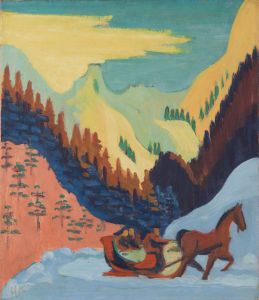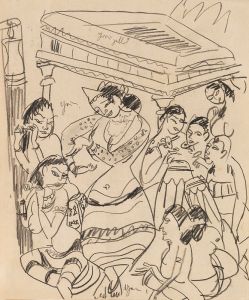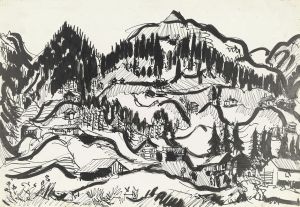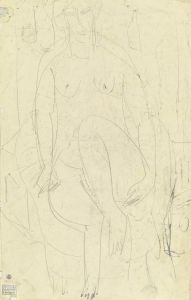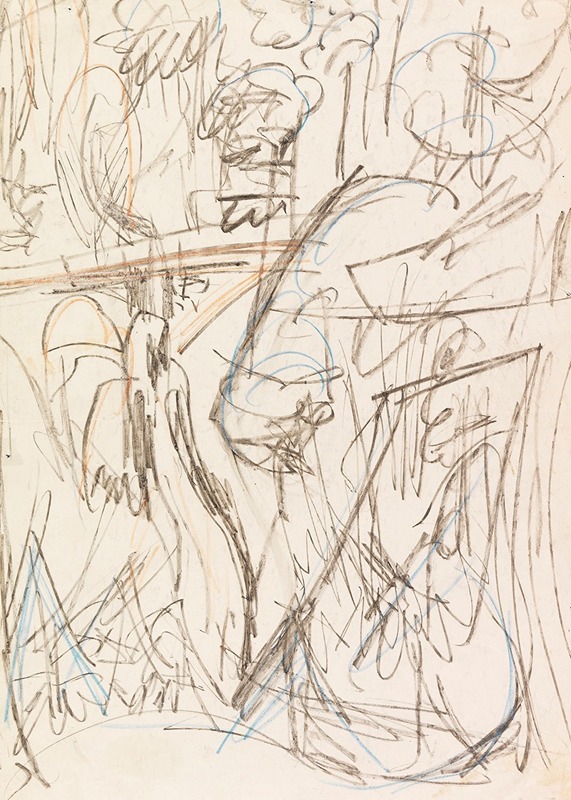
Brücke im Wald bei Königstein
A hand-painted replica of Ernst Ludwig Kirchner’s masterpiece Brücke im Wald bei Königstein, meticulously crafted by professional artists to capture the true essence of the original. Each piece is created with museum-quality canvas and rare mineral pigments, carefully painted by experienced artists with delicate brushstrokes and rich, layered colors to perfectly recreate the texture of the original artwork. Unlike machine-printed reproductions, this hand-painted version brings the painting to life, infused with the artist’s emotions and skill in every stroke. Whether for personal collection or home decoration, it instantly elevates the artistic atmosphere of any space.
Ernst Ludwig Kirchner was a prominent German expressionist painter and one of the founding members of the artist group Die Brücke (The Bridge), which played a crucial role in the development of modern art in the early 20th century. One of his notable works is "Brücke im Wald bei Königstein" (Bridge in the Forest near Königstein), which exemplifies his distinctive style and thematic interests.
"Brücke im Wald bei Königstein" was created during a period when Kirchner and other members of Die Brücke were exploring the expressive potential of color and form, often drawing inspiration from nature and rural landscapes. This painting reflects Kirchner's fascination with the natural world and his desire to capture its essence through bold colors and dynamic compositions.
The painting depicts a bridge set within a forested landscape near Königstein, a town in the Saxon region of Germany. This area was a popular retreat for Kirchner and his contemporaries, who sought to escape the confines of urban life and immerse themselves in the natural environment. The choice of location is significant, as it reflects the group's interest in the harmony between man-made structures and the natural world.
Kirchner's use of color in "Brücke im Wald bei Königstein" is characteristic of his expressionist style. He employs a vibrant palette to convey the emotional intensity of the scene, using contrasting colors to create a sense of movement and energy. The brushwork is loose and expressive, emphasizing the artist's subjective interpretation of the landscape rather than a realistic depiction.
The composition of the painting is carefully constructed to draw the viewer's eye across the canvas. The bridge serves as a central focal point, leading the viewer into the depths of the forest. The surrounding trees and foliage are rendered in sweeping, gestural strokes, creating a sense of rhythm and flow. This dynamic arrangement reflects Kirchner's interest in the interconnectedness of natural forms and the human experience.
"Brücke im Wald bei Königstein" is an example of Kirchner's ability to blend elements of traditional landscape painting with the innovative techniques of expressionism. His work often challenges conventional perspectives, inviting viewers to engage with the emotional and psychological dimensions of the scene. This painting, like many of Kirchner's works, captures a moment of transition and transformation, both in the natural world and in the broader context of early 20th-century art.
Throughout his career, Kirchner's work was deeply influenced by his personal experiences and the cultural milieu of his time. His contributions to the expressionist movement have left a lasting impact on the art world, and "Brücke im Wald bei Königstein" remains a testament to his artistic vision and creativity. The painting continues to be studied and appreciated for its innovative approach to color, form, and composition, reflecting Kirchner's enduring legacy as a pioneer of modern art.





